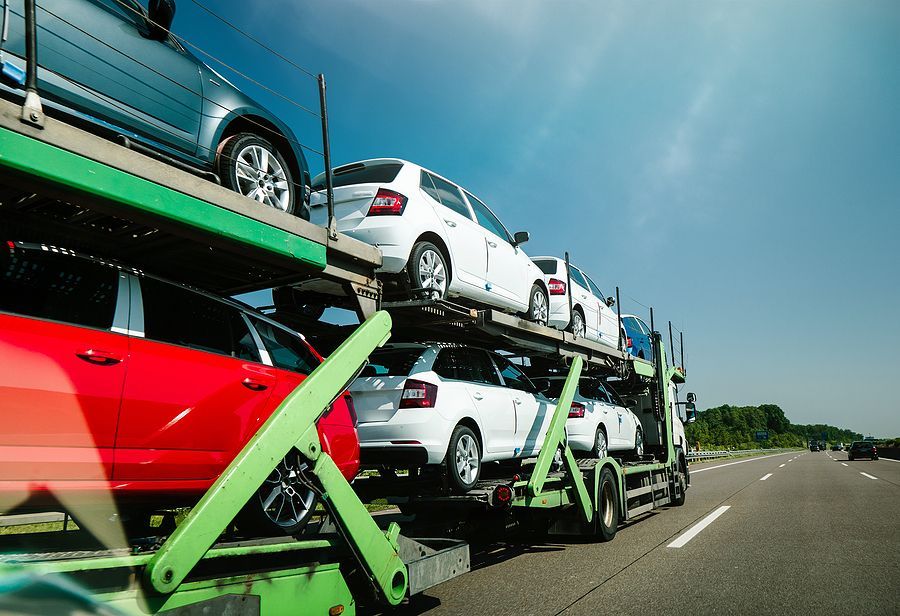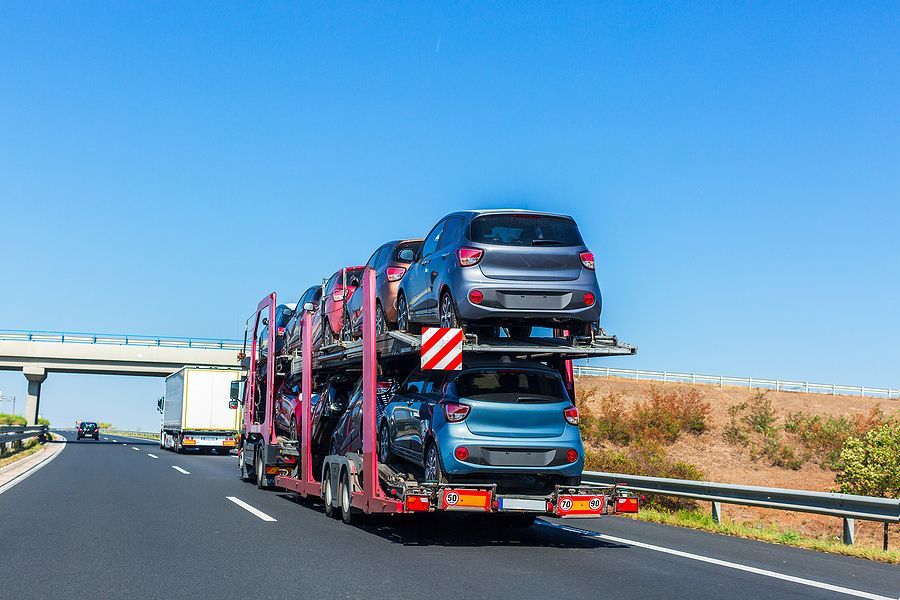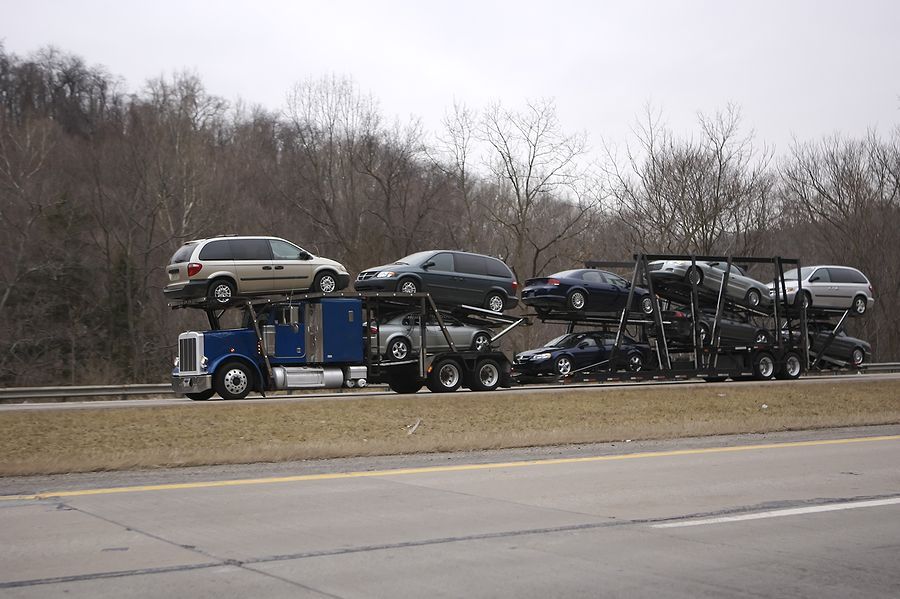shipping car from california to new york
Shipping Car from California to New York

Transporting a vehicle from California to New York involves several logistical considerations, and choosing the right auto transport service is crucial for peace of mind. 25/8 Hauling provides efficient and reliable car shipping solutions, ensuring your vehicle is handled with care and delivered on time. With a focus on customer satisfaction, 25/8 Hauling aims to make the cross-country shipping process as smooth as possible.
Consumers looking for car shipping services between these two states will benefit from understanding the various options available, such as open or enclosed transport. Open transport is often more affordable, while enclosed transport provides extra protection for vehicles during transit. By selecting the service that best fits your needs, you can ensure your car reaches its destination safely and efficiently.
The journey from California to New York covers a vast distance, requiring experienced professionals to manage the shipment effectively. 25/8 Hauling leverages industry knowledge and expertise to navigate any challenges that may arise during transport. With a commitment to delivering exceptional service, customers can trust that their vehicle is in capable hands throughout the entire shipping process.
Understanding Auto Transport with 25/8 Hauling
Navigating the auto transport process with 25/8 Hauling provides an efficient and reliable solution for moving vehicles from California to New York. Key considerations include the benefits of shipping versus driving, preparation steps for your vehicle, and the safety measures in place to protect your investment.
Why Choose Vehicle Shipping Over Driving
Choosing vehicle shipping over driving comes with several advantages. Convenience is a major factor; shipping your car saves you time and energy that would otherwise be spent on a long cross-country drive. Additionally, it prevents wear and tear on your vehicle, preserving its condition.
Cost-effectiveness is also crucial. While it might seem cheaper to drive, factoring in expenses such as fuel, lodging, and potential vehicle maintenance on the road often reveals that shipping is comparable, if not more economical. Furthermore, it eliminates the risks associated with long drives, ensuring the safety of both you and your vehicle.
Preparing Your Vehicle for Transport
Proper preparation of your vehicle ensures a smooth shipping process. Start by cleaning your car, both inside and out. This allows for a thorough inspection for any existing dings or scratches, and it will be necessary to note this with the transport company.
Remove personal items as they aren’t covered by insurance during shipping. Secure loose parts such as antennas and fold in mirrors to prevent damage. Make sure to have only a quarter tank of gas to reduce weight. Lastly, confirm that your vehicle is in good working condition, checking battery charge and tire pressure.
Insurance and Safety Protocols in Auto Transport
Insurance and safety are paramount in auto transport. 25/8 Hauling provides comprehensive insurance coverage as part of their service, ensuring peace of mind. This coverage protects against any potential damage during transit, although incidents are rare due to their rigorous safety protocols.
Vehicles are securely loaded onto transport carriers and are monitored throughout the journey. Drivers follow strict safety guidelines, ensuring that your car reaches its destination in the same condition as it was loaded. For added assurance, understand the terms of the insurance policy and document the vehicle's condition before and after transport.
The 25/8 Hauling Advantage for California to New York Shipments
25/8 Hauling offers reliable, efficient, and customer-centric car transport services from California to New York. Customers benefit from seamless booking, real-time tracking, and comprehensive delivery options.
Booking Your Shipment with 25/8 Hauling
Scheduling your car transport with 25/8 Hauling is simple and straightforward. Begin by visiting our user-friendly website or contacting our customer service team. We'll provide a detailed quote tailored to your specific needs, considering factors such as the vehicle type and any special handling requirements. Once confirmed, you'll receive a booking confirmation along with a pickup schedule. Our team is available to answer any questions and ensure a hassle-free experience from start to finish.
Tracking Your Vehicle During Transit
25/8 Hauling prioritizes transparency and peace of mind by offering real-time vehicle tracking. This feature allows you to monitor your car's progress as it travels across the country. Using our advanced tracking system, you can receive updates on your vehicle's current location, estimated arrival time, and any unforeseen delays. You can access this information online or through our mobile app, ensuring you are always informed about your vehicle’s journey.
Delivery and Post-Transport Services
Upon arrival in New York, 25/8 Hauling ensures a smooth delivery process. Our trained professionals handle your vehicle with care, conducting a thorough inspection upon delivery to guarantee it arrives in the same condition as it was picked up. After delivery, we offer additional support such as addressing any queries or concerns and providing documentation for your records. Our commitment extends beyond transportation to offer a comprehensive post-transport experience.
What factors influence the cost to ship a car from California to New York?
Several aspects affect the price of shipping a car. These include the distance between pick-up and drop-off locations, the size and weight of the vehicle, and the type of transport service, such as open or enclosed carriers. Seasonal demand and current fuel prices may also impact the overall shipping cost.
How do I choose the best car shipping company for transporting my vehicle cross-country?
Begin by researching various auto transport companies and reading customer reviews. Check for licenses and registrations with the Department of Transportation. Transparent pricing and good customer service are also crucial. Request quotes from multiple companies to compare services and choose the one that best fits your needs.
What are the expected timeframes for shipping a car from the West Coast to the East Coast?
Typically, transporting a car from California to New York takes about 7 to 10 days. Exact times can vary based on factors like weather, road conditions, and the specific route taken. It’s advisable to confirm estimated delivery times with the chosen transport company to set realistic expectations.
How can I ensure that an auto transport company is legitimate and trustworthy?
Verify the company’s credentials by checking their USDOT number and licensing status on the FMCSA website. Look for industry affiliations and inquire about insurance coverage in case of damage during transit. Positive customer reviews and an established track record can also indicate reliability and trustworthiness.
What are some tips for preparing my car for long-distance transportation?
Start by cleaning your car thoroughly to document its condition accurately. Remove personal items and deactivate toll tags to avoid unnecessary charges. Ensure the car batteries are charged, tires are inflated, and fluids are topped off. Disable alarms to prevent accidental activation during transit.
Can I calculate the cost of shipping my car before contacting auto transport services?
Some websites offer online calculators to provide an estimated shipping cost based on input parameters. These tools can give a preliminary idea of pricing, though contacting a shipping company for a detailed quote is more precise. Factors like vehicle specifics and desired delivery method can yield more accurate estimates.

How Much Does it Cost To Ship My Car?
At 25/8 Hauling we constantly fine tune our shipping prices based on these 4 factors below:
-
Size of the Vehicle
Larger vehicles take up more space and weigh more, leading to higher shipping rates due to increased fuel costs, limited carrier capacity, and special handling requirements. Additionally, they may require specialized carriers and higher insurance coverage, further raising the cost.
-
The distance of the transport
Distance affects auto hauling rates due to higher fuel, labor, and maintenance costs, as well as increased insurance and logistical complexities over longer routes. Additionally, supply and demand, along with the potential for empty return trips, further influence the overall shipping cost.
-
Whether the vehicle runs
If the vehicle runs, it can be easily driven onto and off the transport trailer, reducing the time and effort required for loading and unloading. Non-running vehicles, however, require special equipment like winches or forklifts, which increases the labor and complexity, leading to higher shipping rates.
-
Timing and seasonal factors
Seasonal and timing factors affect shipping rates for car hauling because demand fluctuates throughout the year. For example, during peak moving seasons, such as summer or around holidays, there’s higher demand for auto transport, which drives up prices. Additionally, weather conditions can impact the availability of carriers and routes; harsh winter conditions might limit routes or slow down transport, increasing costs due to the added risks and delays.
Contact Us
We will get back to you as soon as possible.
Please try again later.


